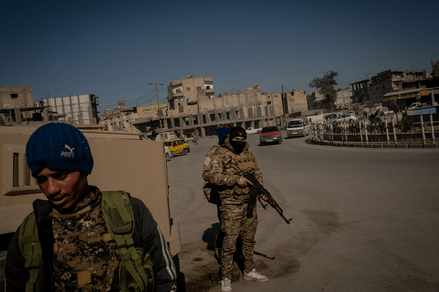
How the Islamic State terrorists used bullying and bribes to rebuild in Syria
In the countryside around this market town, people prefer not to travel after dark. Rumors abound that militants stalk the roads then. Three years after the defeat of its self-declared caliphate, the Islamic State group is reconstituting itself in the Syrian shadows, and few villagers want to test their luck.
“It’s not safe out there,” said Khalifa Salim al-Jeddal, 64, his grave expression framed with deep wrinkles from years in the sun. “There are places I know I can’t just get in my car and drive to. There are sleeper cells.”
A farmer from the nearby village of Jallo, Jeddal knows the risks more than many. The militants tortured him when they ruled his village, he said.
Now they’re growing in confidence again, sometimes wearing military fatigues that make them indistinguishable at a distance from the area’s U.S.-backed security forces.
This is the Islamic State in 2022. No longer holding territory, as the group did until 2019, but lying low in small groups, operating with increasing sophistication and exploiting the breathing spaced afforded by Syria’s fractured politics to rebuild.
They are also taking advantage of the local Kurdish-led administration’s struggles to fully govern the broad swath of northeastern Syria it has come to control since the fall of the caliphate, recruiting informants from impoverished communities and intimidating individuals who work with local government.
The dangers were dramatically underlined last month when hundreds of Islamic State fighters assaulted a prison holding suspected militants in the northeastern city of Hasakah.
American and British special forces were forced to join the 10-day battle to recapture it. More than 500 people died, about three quarters of them ISIS members, according to the Syrian Democratic Forces (SDF).
Source: Washington Post





